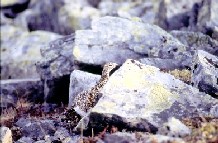LABECO
Scope and Types of Environmental Impacts(LABECO)
The objective of LABECO was to find bio-indicators suitable for monitoring the environmental effects for tourist destinations.
The state of tourist destinations and the surrounding nature was assessed by using:
- Point count data on birds
- Occurrence of disturbance-sensitive species
- Wildlife triangle survey data
- Indicators of sustainable nature-based tourism
- Methods of monitoring trampling resistance
The task produced:
- A guidebook on bio-indicators
- An exhibition on the nature impacts of tourism
- A list of suitable indicators to evaluate and monitor the state of tourist destinations
|
|
Indicator
|
Specific measure
|
|
Landscape indicators
|
Tolerance level of landscape for the change
|
Landscape structure
|
|
|
Quality of green areas
|
Green area hierarchy
|
|
|
Visual diversity
|
Landscape nodes
|
|
|
Attraction values of the landscape
|
Number of tourists
|
|
|
Customer satisfaction
|
Customer satisfaction index
|
|
Geological and hydrogeological indicators
|
Geological diversity
|
Survival of local soil and bedrock monuments
|
|
|
Sustainable use of extractable soil
|
Use of extractable soil recourses
|
|
|
Hydrology I
|
Amount and quality of ground and surface water
|
|
|
Hydrology II
|
Eutrophication of waters
|
|
|
Hydrology III
|
Amount of run-off water
|
|
|
Hydrology IV
|
Hydrogeological changes
|
|
|
Susceptibility of terrain
|
Survival of bedrock and soil resources
|
|
|
Erosion of trails
|
Erosion of trails
|
|
Ecological indicators
|
Survival of wilderness species
|
Proportion wilderness birds of the community
|
|
|
Urbanization of nature
|
Proportion of urban birds of the community
|
|
|
Urbanization of species
|
Number of magpies and crows
|
|
|
Occurrence of disturbance-sensitive species
|
Territory occupancy and breeding success of the Golden Eagle
|
|
|
Breeding success of birds
|
Artificial nest losses
|
|
|
Wear of trails
|
Width and depth of trails
|
|
|
Wear of alpine heats I
|
Total cover of mosses and lichens
|
|
|
Wear alpine heats II
|
Cover of crowberry
|
|
|
Comfortableness of the environment
|
Amount of litter in rest points
|
|
Social indicators
|
Participation
|
Communication about the land use planning and changes
|
|
|
Interactive planning and collaborative learning
|
Participation of local actors on public hearings/meetings, e.g. master plan meetings
|
|
|
Acceptability of tourism
|
How local people see the tourism
|
|
|
Land and resource use of locals
|
Opportunity to continue traditional land use
|
Contact details:
Project Coordinator
Jukka Jokimäki
University of Lapland
Arctic Centre
P.O.Box 122
96101-FI Rovaniemi
FINLAND
email: firstname.lastname@ulapland.fi
Main publications:
Jokimäki, J. & Kaisanlahti-Jokimäki, M.-L.. (toim.) 2007 : Sustainability indicators for tourist destinations (in Finnish with English summary and conlusions). -Arktisen keskuksen tiedotteita 52. Lapin yliopisto, Arktinen keskus. Painatuskeskus Finland, Rovaniemi. 80 s.
Sulkava, P. & Norokorpi, Y. (toim.) 2007: Impact of nature tourism on vegetation and erosion in the Pallas-Yllästunturi National Park (In Finnish with English documentation page). -Metsähallituksen luonnonsuojelujulkaisuja. Sarja A 166.
Kangas, K., Sulkava, P., Koivuniemi, P., Tolvanen, A., Siikamäki, P. & Norokorpi, Y. 2007: What determines the area of impact around campsites? A case study in a Finnish national park. -Forest Snow and Landscape Research 81: 139-150.
Kaisanlahti- Jokimäki, M.-L., Jokimäki, J., Huhta, E., Ukkola, M., Helle, P. & Ollila, T. 2008: Territory occupancy and breeding success of the Golden Eagle (Aquila chrysaetos) around tourist destinations in northern Finland. -Ornis Fennica 85: xx-xx (in press).